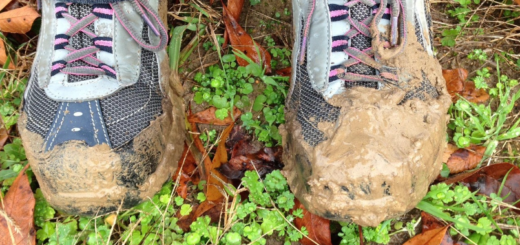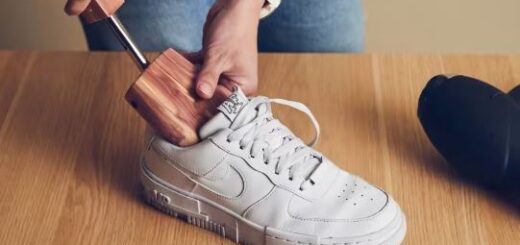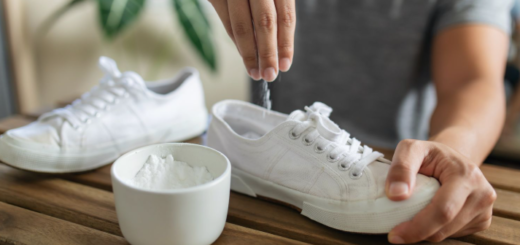The Hidden Risk of Waterproofing Sprays on Leather Footwear
Among the many misunderstandings about shoe care, one of the most widespread is the routine use of waterproofing sprays on smooth, full grain leather shoes. While these sprays offer protection from moisture, they often do more harm than good when used on this particular type of leather. The unintended consequence? Preventing the leather from absorbing vital conditioning ingredients that keep it soft, supple, and long-lasting.
When Sprays Work Well: Suede, Nubuck, and Fabric Shoes
Waterproofing sprays serve a beneficial purpose when applied to shoes made of suede, nubuck, or textile materials. These types of surfaces lack natural resistance to moisture and easily absorb water, making them prone to staining and damage in wet conditions. Sprays form a protective film over the fibers, repelling moisture and keeping the material safe from rain or spills.
Even though some modern versions of suede and similar materials are pre-treated during manufacturing or tanning, using a spray can still enhance their durability. It helps maintain their protective coating, especially when shoes are regularly worn in challenging environments. For such materials, these sprays are genuinely useful tools in preserving quality and appearance.

Why Smooth Full Grain Leather Is Different
Smooth full grain leather, commonly used in high-end dress shoes and quality boots, functions very differently from suede or textiles. This leather includes the outermost part of the animal hide, known as the grain layer, which serves as its own natural defense against environmental exposure. Designed by nature to withstand rough conditions, the grain surface possesses impressive toughness and resistance, although it still requires occasional support to retain moisture and flexibility.
This support should come not from synthetic waterproof coatings, but from nourishing products like leather conditioners and shoe creams. These products penetrate the surface of the leather, delivering essential oils and fats that keep it healthy and prevent it from becoming brittle.
Short-Term Gain, Long-Term Loss
One of the main reasons people apply waterproofing sprays to leather is the visible, immediate result: water beads off the surface, giving a sense of total protection. This quick win is often encouraged by shoe retailers, not only because of the effective short-term benefit, but also because sprays are easy to sell and need frequent replacement—making them profitable.
However, this quick gratification hides the long-term consequences. A layer of waterproofing spray, particularly those that include silicone or synthetic resins, can block nourishing creams from penetrating the leather. Over time, this creates a paradox where the leather is shielded from rain but denied the internal moisture it needs to stay supple. The result is a surface that might remain dry, but underneath, the leather begins to crack and deteriorate.
How Sprays Interfere with Leather Nourishment
When you apply a waterproofing product to full grain leather, you’re creating a synthetic barrier over a surface that should be breathing and absorbing conditioning ingredients. While some of this barrier may wear off or be partially removed by solvents in shoe creams, it often still lingers enough to prevent proper absorption.
Unless the shoe is thoroughly cleaned before each care session—which can be harsh on the leather in itself—this residual layer builds up, making each subsequent application of conditioner or cream less effective. Over time, instead of preserving the leather’s integrity, this process leads to premature aging from within.
Alternatives That Support Leather’s Natural Qualities
Instead of relying on waterproof sprays, smooth leather should be maintained with a combination of products that enhance its existing properties. High-quality leather conditioners provide the oils necessary to nourish the grain and prevent it from drying out. Shoe creams, especially those with pigments, restore color and keep the leather soft, while wax polishes add a subtle layer of water resistance and shine.
These products work in harmony with the leather’s natural defenses. Although they might not offer the immediate waterproofing effect of a synthetic spray, they create a more balanced, breathable, and sustainable method of protection. A well-polished shoe, particularly in high-shine areas like the toe and heel, can repel water effectively while allowing the leather to remain flexible and hydrated.
Proper Leather Maintenance Ensures Longevity
Full grain leather that’s cared for using conditioners, creams, and polish can last for decades. In fact, some of the finest leathers in the world are intentionally left with minimal finishing so that their quality and character can be preserved and enhanced through careful maintenance.
Neglecting this and opting instead for waterproofing sprays risks undermining what makes these leathers special in the first place. A shoe’s surface might still look good in the short term, but the underlying structure will slowly deteriorate if it isn’t properly nourished. The very quality that sets full grain leather apart—its breathability and ability to absorb treatments—is stifled under a spray-on seal.
Know When to Use Sprays and When Not To
There’s a time and place for waterproofing sprays in footwear care, but smooth, full grain leather simply isn’t one of them. Understanding the specific needs of your shoe materials can make a tremendous difference in how long your footwear lasts and how well it ages.
If your goal is to maintain the beauty, strength, and longevity of your leather shoes, prioritize conditioners, creams, and wax polish. They not only enhance the natural qualities of leather but also contribute to a patina that becomes more attractive over time. Sprays may give quick results, but mindful care leads to timeless value.

Frequently Asked Questions
Why are waterproofing sprays commonly used on shoes?
They provide quick protection against water and are easy to apply, giving instant visible results.
Are waterproofing sprays suitable for all shoe materials?
No, they are ideal for suede, nubuck, and textile shoes but not recommended for smooth full grain leather.
What makes full grain leather naturally resistant to moisture?
Full grain leather retains the animal hide’s outer layer, which acts as a natural protective barrier.
Why is using sprays on full grain leather problematic?
Sprays block conditioning oils from penetrating the leather, leading to dryness and cracking over time.

What happens when leather cannot absorb conditioners or creams?
It dries out internally, loses flexibility, and becomes prone to surface damage and structural failure.
Can waterproofing sprays be partially removed by shoe cream solvents?
Yes, but usually not completely, which still interferes with proper nourishment of the leather.
What are better alternatives to waterproofing sprays for smooth leather?
Use leather conditioner, shoe cream, and wax polish to maintain moisture and add light water resistance.
Why do retailers often recommend waterproofing sprays?
Sprays are profitable, have high turnover rates, and provide a quick-fix solution that appeals to consumers.
How should smooth full grain leather be properly maintained?
Clean the shoes, apply leather conditioner, follow with shoe cream, and finish with a wax polish.
Are waxes enough to protect smooth leather from water?
Waxes offer reasonable water resistance when used regularly and combined with the leather’s natural grain barrier.
What kind of sprays should always be avoided?
Sprays containing silicone should be avoided due to their harsh, pore-blocking effects on leather.
What’s the long-term impact of misusing waterproof sprays on leather?
The leather may look fine initially but will eventually dry out, crack, and deteriorate from within.







